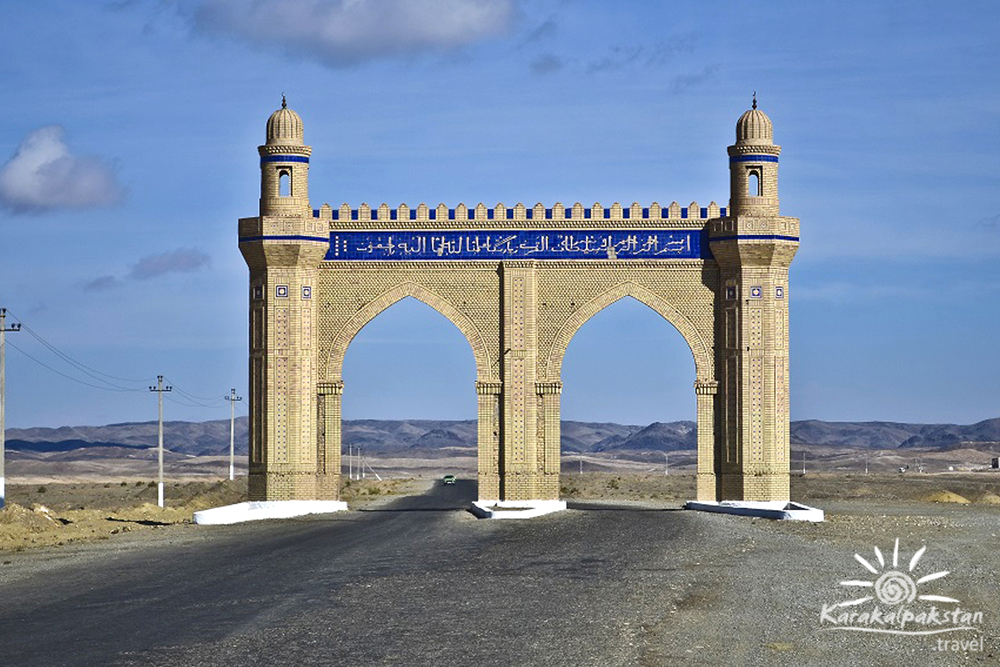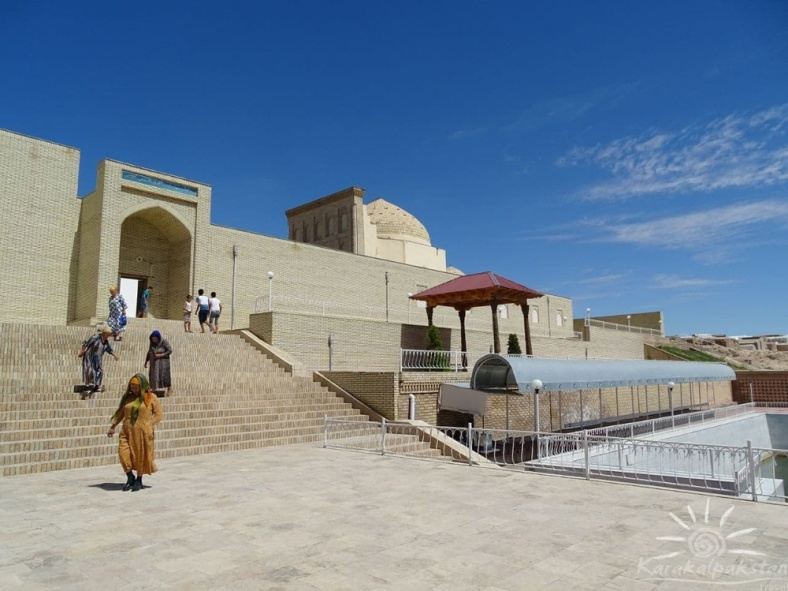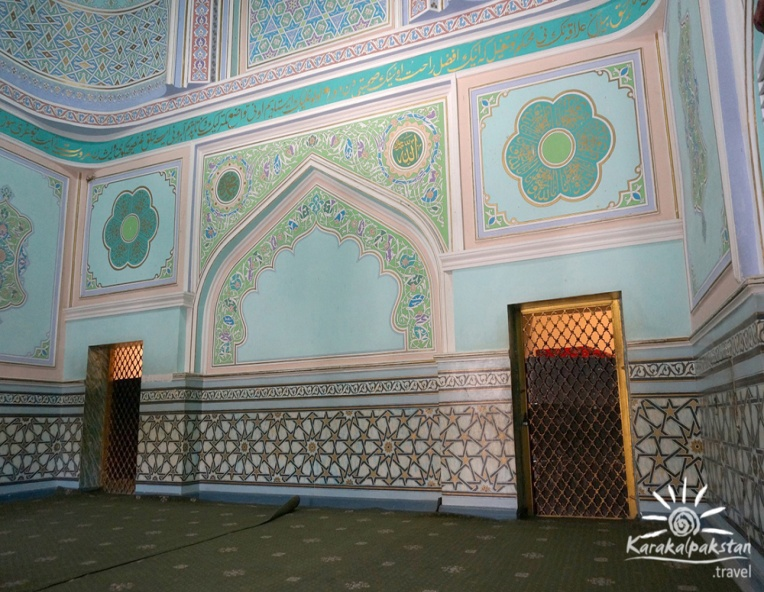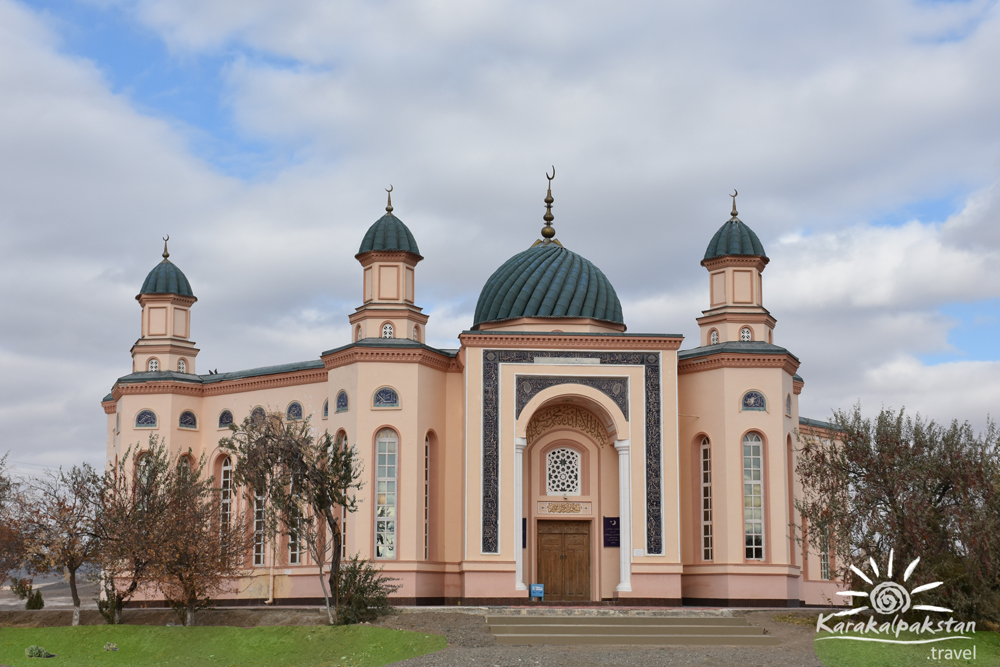Shrine and history of Sultan Uwais Baba
Lobarxon Bazarbaeva
Karakalpak State University, Faculty of Philology and Journalism, 4th year student
Abstract: This article is about the pilgrimage complex of Grandfather Uwais and its history.
Key words: Sultan Uwais, pilgrimage, complex, history, architecture, monument.
Grandfather Sultan Uwais Pilgrimage Complex.
Sultan Uvais Bobo complex is an architectural monument in Beruni district (17th-19th centuries). Sultan Uwais (real name Suhail ibn Amir ibn Ruman ibn Nahiya ibn Murad) was born in the Muradi tribe of the Qaran village of Yemen (in 625 BC). He was martyred at the age of 32 in the Battle of Siffin (657 AD) between the soldiers of Hazrat Ali and Muawiya. He was buried in the village of Safa in Syria. Sultan Uwais was engaged in collecting hadiths (7a. 1st half). In the 17th century, his followers built a symbolic tomb (in present-day Beruni) and a shrine. Olloqulikhan built a large mosque and 10 separate chillkhanas for the sheikh (19th century). The complex is rectangular in shape (21.5×53 m), oriented from north to south. Sultan Baba mausoleum, mausoleums built later (mostly with domes), etc. It is located in the northern part of the courtyard surrounded by a brick wall. In the south there is a mosque, a porch, a room and hotels. The complex is entered from the west. The complex of Sultan Uwais Baba was built on the basis of medieval Khorezm architectural traditions (made of brick). On the initiative of Khorezm region hokimity, the shrine, the entrance part was renovated (2002). The mausoleum of Grandfather Sultan Uwais is not only a favorite place of the people of the lower Amudarya, but also a tourist center.

The complex of Sultan Uvais-bobo (XVII-XIX centuries) is one of the most sacred places in the lower reaches of Amudarya. He is associated with the name of Uwais al-Qarani. It is narrated that he was the Prophet s.a.w. was considered one of the followers and lived in the village of Qarayn in Yemen. The reason why he is called Sultan is that he was the Sultan of saints. Sultan Uwais Qarani in 37 Hijri (657 AD) Hazrat Ali r.a. will be buried in this place according to his recommendations.
Sultan Uwais Qarani our Prophet s.a.v. even though they did not see him personally, their love for him was boundless. He is Rasulullah s.a.w. was one of the pious people who strictly adhered to the Sunnah of Our grandfather Sultan Uwais Rasulullah s.a.v. when he heard that his teeth were broken, he broke his own teeth. It was from the strength of love and respect. According to the order of Sultan Muhammad Khorezmshah, a large mausoleum was built at the place where Sultan Uwais was buried. However, due to Genghis Khan’s invasion of Khorezm in 1221, this mausoleum was destroyed.
The mausoleum built by Khorezmshah remained in a half-ruined state even after the reign of Genghis Khan. In 1800, the engineer Velichko, who was in the shrine of Grandfather Sultan Uwais and mapped it, remembers the existence of the mausoleum mosque.

After nearly 600 years, Khiva khan Eltuzar Khan restored this mausoleum in 1805-1806. However, due to severe earthquakes and floods in Khorezm, the mausoleum collapsed. 30 years after this event, the son of Muhammad Rahim Khan I, Olloquli Khan, restored the mausoleum in 1836-1838. The mausoleum of Grandfather Sultan Uwais was built on a high place. During the time of the former absolutist system, a gold chandelier and a grate with golden water were taken away. In 1932, the golden dome placed on top of the dome was also taken away by unknown people of the government of that time.

The biggest shrine in the city is Sultan Uwais Baba shrine. According to historical data, in 659 Hijri, Sultan Uwais was buried on the mountain where the deceased spent his entire life (today Sultan Uwais Mountain) according to the fatwa of the ulama. Almost six centuries later, in 1805-1807, the mausoleum was restored by Khiva Khan Eltuzar Khan. Later it was also damaged by a strong earthquake. In 1836-37, Khan of Khiva Olloquli Khan restored the mausoleum.

At the initiative of our honorable President Sh.M. Mirziyoyev, a huge construction and beautification work was carried out at the shrine of Grandfather Sultan Uvais, and a mosque building was built and handed over to Muslims.
REFERENCES
- G‘ulomov Y.G‘. Xorazmning sug‘orilish tarixi. T.: Fan, 1959.
- Bayoniy M.Y. Shajarayi Xorazmshohiy // “Meros” to‘plamida. – T.: Kamalak, 1991.
- Matniyozov M. Xorazm tarixi. Urganch.: Xorazm, 1997.
- Описание Хивинского ханства Генерального Штаба полковника Данилевского. // ЗИРГО, книжка 5, под.ред. П.Г. Редкина. СПб.: Типография министерства внутренных дел. 1851.
- Описание Хивинского ханства Генерального Штаба полковника Данилевского. // ЗИРГО, книжка 5, под.ред. П.Г. Редкина. СПб.: Типография министерства внутренных дел. 1851.
- Usmonov M. T. Information protection supply. International Journal of Academic and Applied Research (IJAAR) ISSN: 2643-9603 Vol. 5 Issue 1, January – 2021, Pages: 12-15.
- Usmonov M. T. Information Security Policy. International Journal of Academic Pedagogical Research (IJAPR) ISSN: 2643-9123 Vol. 5 Issue 1, January – 2021, Pages: 70-73.
- Usmonov M. T. Information War. International Journal of Academic and Applied Research (IJAAR) ISSN: 2643-9603 Vol. 5 Issue 1, January – 2021, Pages: 79-82.
- Usmonov M. T. International and National Legal Base in the Field Of Information Security. International Journal of Academic Pedagogical Research (IJAPR) ISSN: 2643-9123 Vol. 5 Issue 1, January – 2021, Pages: 7-14.
- Usmonov M. T. Legal Legislative Basis for Detection of Information Crime. International Journal of Academic Engineering Research (IJAER) ISSN: 2643-9085 Vol. 5 Issue 1, January – 2021, Pages: 80-87.
- Usmonov M. T. Mathematical Proofs. Incomplete Induction, Deduction, Analogy. The Concept Of Algorithm And Its Properties. International Journal of Academic Multidisciplinary Research (IJAMR) ISSN: 2643-9670 Vol. 5 Issue 1, January – 2021, Pages: 26-29.
- Usmonov M. T. Means of Information Protection. International Journal of Academic and Applied Research (IJAAR) ISSN: 2643-9603 Vol. 5 Issue 1, January – 2021, Pages: 27-30.
